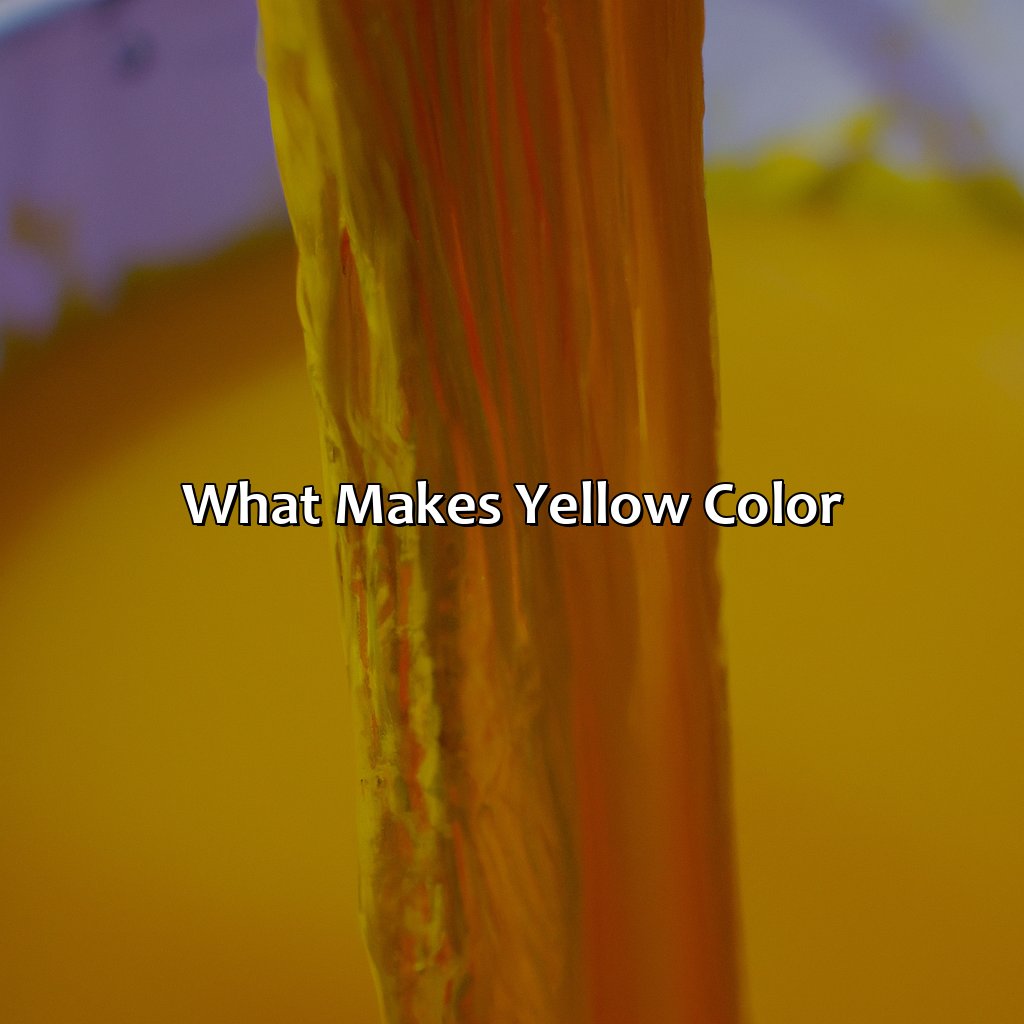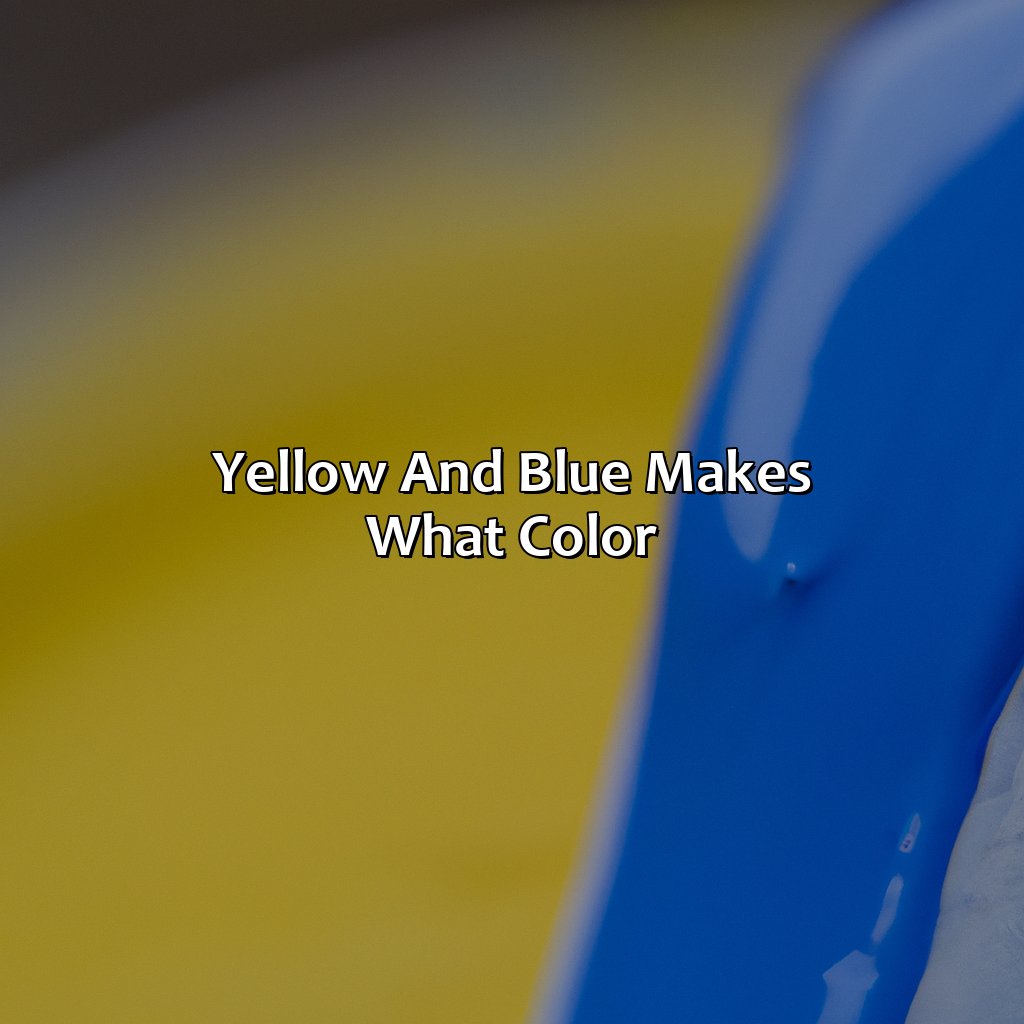Yellow is one of the most vibrant and eye-catching colors in the spectrum, but have you ever wondered what makes yellow so unique? From its chemical composition to its cultural significance, there's a lot more to this sunny hue than meets the eye. Yellow isn't just a color—it's a symbol, an emotion, and a powerful force in design, art, and even psychology. So, buckle up, because we're diving deep into the world of yellow and uncovering what makes it so special.
Let's face it, yellow has a way of grabbing your attention. Whether it's the glowing rays of the sun, the cheerful petals of a sunflower, or the bright caution signs on the road, yellow is impossible to ignore. But why is that? What gives yellow its power to stand out and evoke such strong emotions? In this article, we'll explore everything from the science behind yellow's brightness to its role in human history and modern society.
What makes yellow so fascinating is how it transcends just being a color. It's tied to our emotions, memories, and even our survival instincts. From ancient civilizations to modern-day branding, yellow has played a crucial role in shaping the way we perceive the world. So, if you've ever been curious about what makes yellow so darn special, you're in the right place.
Read also:Anime Handshake The Ultimate Guide To A Fandom Ritual
Understanding the Science of Yellow
Why Is Yellow So Bright?
Let's start with the basics. What makes yellow so bright? Well, it all comes down to science. Yellow is one of the primary colors in the visible light spectrum, which means it's a pure wavelength that our eyes detect easily. The human eye is particularly sensitive to yellow because it falls right in the middle of the spectrum, where our photoreceptor cells are most active. In simple terms, yellow is like a neon sign for your brain—it's impossible to overlook.
But here's the kicker: yellow doesn't just shine because of its wavelength. It also reflects a ton of light, which makes it appear even brighter. This is why yellow is often used for safety gear, road signs, and emergency vehicles. It's not just a coincidence—it's science at work!
The Chemical Composition of Yellow
When it comes to pigments, yellow is created by mixing certain compounds that reflect yellow light while absorbing other wavelengths. For example, the pigment "chrome yellow" gets its hue from compounds like lead chromate, while "cadmium yellow" comes from—you guessed it—cadmium sulfide. These chemicals are what give yellow its signature brightness and longevity.
But here's a fun fact: not all yellows are created equal. Some yellow pigments fade over time due to exposure to light or chemicals, while others remain vibrant for centuries. This is why artists and manufacturers have to choose their yellows carefully depending on the application.
The Cultural Significance of Yellow
Yellow in Ancient Civilizations
Yellow has been a staple in human culture since the dawn of civilization. Ancient Egyptians used yellow ochre to paint their tombs, symbolizing the sun and eternal life. In Chinese culture, yellow was reserved for emperors and royalty, representing power and wealth. Meanwhile, in Hinduism, yellow is associated with renewal and spirituality.
But yellow hasn't always had a positive connotation. In medieval Europe, yellow was often linked to betrayal and cowardice, thanks in part to Judas Iscariot's depiction in art. However, over time, yellow has regained its status as a symbol of joy and optimism, proving that cultural perceptions can shift dramatically.
Read also:One Of One On Neck Tattoo A Bold Statement For The Brave At Heart
Yellow in Modern Society
Fast forward to today, and yellow is everywhere. It's the color of McDonald's golden arches, the smiley face emoji, and countless brand logos. Brands love yellow because it's associated with happiness, energy, and creativity—all qualities that resonate with consumers. But yellow isn't just for marketing—it's also a key player in design, fashion, and even psychology.
Studies have shown that yellow can boost mood and increase focus, making it a popular choice for office spaces and creative environments. However, too much yellow can be overwhelming, so designers often use it sparingly to create balance and harmony.
Psychology of Yellow
How Yellow Affects Our Emotions
Did you know that yellow can influence your mood? It's true! Yellow is often described as a "happy" color because it stimulates the release of serotonin, the brain's feel-good chemical. This is why yellow is often used in therapy and design to create positive environments.
But yellow isn't all sunshine and rainbows. In excess, it can cause anxiety and stress, which is why it's important to use yellow thoughtfully. For example, a yellow room might feel cheerful and inviting, but a yellow office might feel chaotic and overwhelming. It all depends on the context and the individual.
Yellow and Decision-Making
Yellow also plays a role in decision-making. Studies have shown that people are more likely to notice yellow objects and remember yellow brands. This is why companies use yellow to grab attention and create a lasting impression. However, the impact of yellow on decision-making isn't just about visibility—it's also about trust. Yellow is often associated with reliability and optimism, making it a powerful tool in branding and marketing.
The Role of Yellow in Nature
Yellow in the Animal Kingdom
Yellow is a common color in the animal world, and it serves a variety of purposes. For example, bees and wasps use yellow and black stripes as a warning to predators, while certain birds and butterflies use yellow to attract mates. In plants, yellow flowers are often used to attract pollinators like bees and butterflies, ensuring the survival of the species.
But here's something interesting: not all yellow in nature is pigment-based. Some animals and plants use structural coloration, which means they reflect yellow light through microscopic structures rather than pigments. This is what gives certain species their vibrant, metallic sheen.
Yellow in the Plant World
In the plant kingdom, yellow is one of the most common flower colors. Sunflowers, daffodils, and marigolds are just a few examples of yellow flowers that brighten up gardens and fields around the world. But yellow isn't just about beauty—it also plays a crucial role in plant reproduction. Yellow flowers are often rich in nectar, making them irresistible to pollinators like bees and butterflies.
Interestingly, yellow flowers are also used in traditional medicine. For example, chamomile and turmeric have been used for centuries to treat a variety of ailments, from inflammation to digestive issues. This shows that yellow isn't just a color—it's also a source of healing and wellness.
Yellow in Art and Design
The Evolution of Yellow in Art
Yellow has been a favorite of artists for centuries, from the Impressionists to the Abstract Expressionists. Vincent van Gogh, in particular, was known for his love of yellow, using it to convey emotion and movement in his paintings. His famous "Sunflowers" series is a testament to the power of yellow in art.
But yellow isn't just for painters—it's also a key player in digital design. In the digital age, yellow is often used to create contrast and draw attention to important elements on a screen. This is why you'll often see yellow buttons and highlights in websites and apps.
Yellow in Modern Design
In modern design, yellow is used to convey energy, creativity, and innovation. It's a popular choice for tech companies, startups, and creative agencies looking to make a bold statement. However, designers have to be careful not to overuse yellow, as it can become overwhelming in large doses.
One trend in modern design is the use of muted yellows, which offer a softer, more sophisticated take on the color. These shades are perfect for branding and marketing, as they convey warmth and approachability without being too intense.
Yellow in Pop Culture
Yellow in Music and Movies
Yellow has made its mark in pop culture, appearing in everything from song lyrics to movie titles. Coldplay's hit song "Yellow" is just one example of how the color has inspired artists. In movies, yellow is often used to create a sense of nostalgia or whimsy, as seen in films like "The Wizard of Oz" and "The Secret Life of Walter Mitty."
But yellow isn't just for happy-go-lucky moments—it's also been used to convey darker themes. For example, the yellow raincoats worn by the killer in "The Girl with the Dragon Tattoo" create a sense of tension and unease, proving that yellow can be versatile in storytelling.
Yellow in Fashion
Yellow has been a staple in fashion for decades, appearing in everything from runway collections to streetwear. In recent years, yellow has become a symbol of empowerment and self-expression, with designers using bold shades to make a statement. From neon yellow jackets to mustard yellow dresses, there's a yellow shade for everyone.
But here's the thing: yellow isn't just for spring and summer. In fact, designers are increasingly using yellow in fall and winter collections, proving that it's a year-round color. Whether you're rocking a bright yellow coat or a subtle mustard accessory, yellow is a great way to add a pop of color to your wardrobe.
Yellow in Technology and Innovation
Yellow in Digital Interfaces
In the world of technology, yellow is often used to create intuitive and user-friendly interfaces. From yellow highlights in text editors to yellow buttons in apps, this color is a go-to for designers looking to guide users through a digital experience. The reason? Yellow draws attention without being intrusive, making it perfect for calls to action and important notifications.
But yellow isn't just for UI/UX—it's also used in hardware design. For example, some tech companies use yellow accents in their products to create a sense of playfulness and innovation. This is why you'll often see yellow in gadgets aimed at younger audiences.
Yellow in Artificial Intelligence
Believe it or not, yellow is even making waves in the world of artificial intelligence. Some AI systems use yellow to highlight important data points or to indicate progress in machine learning algorithms. This is because yellow is easy to spot and interpret, making it a valuable tool in data visualization.
But here's a fun fact: yellow isn't just for humans. Some AI systems are designed to recognize yellow objects in the real world, which can be useful in applications like autonomous vehicles and robotics. This shows that yellow isn't just a color for us—it's also a color for machines!
Conclusion
So, what makes yellow so special? The answer lies in its science, culture, and versatility. From its bright wavelength to its emotional impact, yellow is a color that truly stands out. Whether you're an artist, designer, or just someone who loves a good sunny day, yellow has something to offer everyone.
Now that you know what makes yellow so unique, it's time to embrace this vibrant hue in your own life. Whether you're painting a room, designing a logo, or just adding a pop of color to your wardrobe, yellow is a powerful tool that can elevate your creativity and mood. So, go ahead and let yellow shine!
Before you go, why not leave a comment and share your thoughts on yellow? Do you love it, hate it, or somewhere in between? And if you enjoyed this article, don't forget to share it with your friends and check out our other articles for more fascinating insights into the world of color. After all, life is colorful—so why not embrace it?
Table of Contents
- Understanding the Science of Yellow
- The Cultural Significance of Yellow
- Psychology of Yellow
- The Role of Yellow in Nature
- Yellow in Art and Design
- Yellow in Pop Culture
- Yellow in Technology and Innovation


